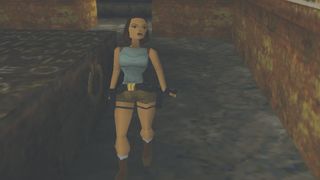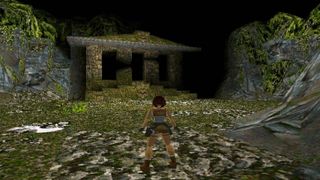Learning to Love Myself as Lara: Gender Euphoria in Tomb Raider
Opinion | "Attraction, I reasoned back then, only later coming to terms and accepting the feeling as yearning."

What do we talk about when we talk about Tomb Raider? Growing up in the '90s and early '00s, it tended to be one of two things among my friends: trapping the butler in Croft Manor’s walk-in freezer, or Lara’s prodigious polygon breasts. Despite that, there was something different about how I reacted to Lara. Attraction, I reasoned back then, only later coming to terms and accepting the feeling as yearning. I didn’t want to be with Lara. I wanted to be her.
In today's world of Aloys, Ellies, and Faith Connors, it’s easy to forget just how few playable main female protagonists existed back in 1996. Sure there was Samus, and Jill Valentine from a half-year before, but they were exceptions to the rule. And, let’s face it, none of them crashed into the zeitgeist quite like Lara.
She was a celebrity, gracing magazine covers, getting her own shiny Hollywood adaptations, and hawking myriad products. I couldn’t even accompany my dad to a Land Rover show without seeing someone dressed up as Lara and gawked at by a beige mass of middle aged men. To a child of the '90s, she was totemic, a veritable beacon of femininity. But I was keenly aware that she was so much more. Lara was, is, intelligent and capable, charismatic and independent, and headstrong to a fault. To a closeted trans girl like me, she was aspirational.
Croft-adored


The original Tomb Raider trilogy is being remastered for the Nintendo Switch
As a kid bereft of games consoles, I turned to my PC and frequented bargain bins for my fix. Years after my friends had moved on from raiding tombs, I rediscovered the original games. Far from just watching others play, this time I was Lara Croft. I can still recall the fluttery sensation in my stomach, the gender euphoria, of the hours we spent in exotic locations around the world.
I was a pre-teen when Angel of Darkness came out, yet I can vividly recall how I felt looking at the game cover. I felt seen. There was the same yearning, the same thrill at seeing my inner self displayed so confidently, so powerfully. The memory remains potent and present and, for all the game’s faults, I treasure it for that.
By my early 20s, I’d turned full-on collector, buying up original boxed copies of the games, and any other merch I could get my hands on. I sat down to play through the first few games again while simultaneously stepping into the Tomb Raider reboot in 2013. Although we have the origins games' remastered variants on the way, it’s this younger, more nuanced take on Lara that has guided the franchise over the last decade – from the Alicia Vikander vehicle in 2018 to the recent Netflix animation, and Phoebe Waller Bridge’s impending live action series.
Discourse at the time proclaimed this as a win for feminism, turning what had previously been seen to be empty eye candy into a complex and fully rounded capital-C Character. But as far as I was concerned, Lara had always been that. Don’t get me wrong, I’m all for the ‘Survivor’ era entries, but Lara was as big or small as the player was willing to invest. If all you saw was T and A, of course you were only going to see something ‘for the boys’. This line of thinking also occludes the real and vital contribution of women right from the inception of Lara Croft; women like Vicky Arnold, who wrote the scripts for the first three games alongside the backstory in the manuals.
Sign up to the GamesRadar+ Newsletter
Weekly digests, tales from the communities you love, and more

"But to trans women like me, Lara means the world."
Listen, I know she was designed by a cis white man. I know she was originally supposed to be Latin American, a decision vetoed because, apparently, a woman protagonist was already enough of a commercial risk. I know a franchise built around stealing artefacts from indigenous cultures is problematic to say the least. But to trans women like me, Lara means the world.
Nostalgia is a word that gets flung around a lot these days, used interchangeably to describe anything that carries a whiff of childhood. But nostalgia in its truest sense comes with pain and longing. When I think of playing Tomb Raider, I remember the sheer joy I felt to exist as a woman, if only in a digital environment. But I also recall how many long years laid ahead of me, the struggles still to come. I didn’t officially come out until the age of 31. There’s a whole host of women who have inspired me, but no list would be complete without Lara Croft and how she helped me see beyond my own confines.
Want more Lara in your life? Here are 10 of the best Tomb Raider games plundering caves right now
As a former journalist, Stefanie has covered everything from Farscape to pharma. Now she divides her time in marketing, writing weird queer novels, and gaming. She sometimes writes about the latter.

My next Metroidvania kick is an ingenious mix of Zelda-like exploration, twin-stick combat, and pitch-perfect controls – with 97% positive Steam user reviews

Stellar Blade keeps fixing things that bothered me when I reviewed it – now including "input time for basic attacks, as well as the timing of blocking and parrying"
Most Popular



